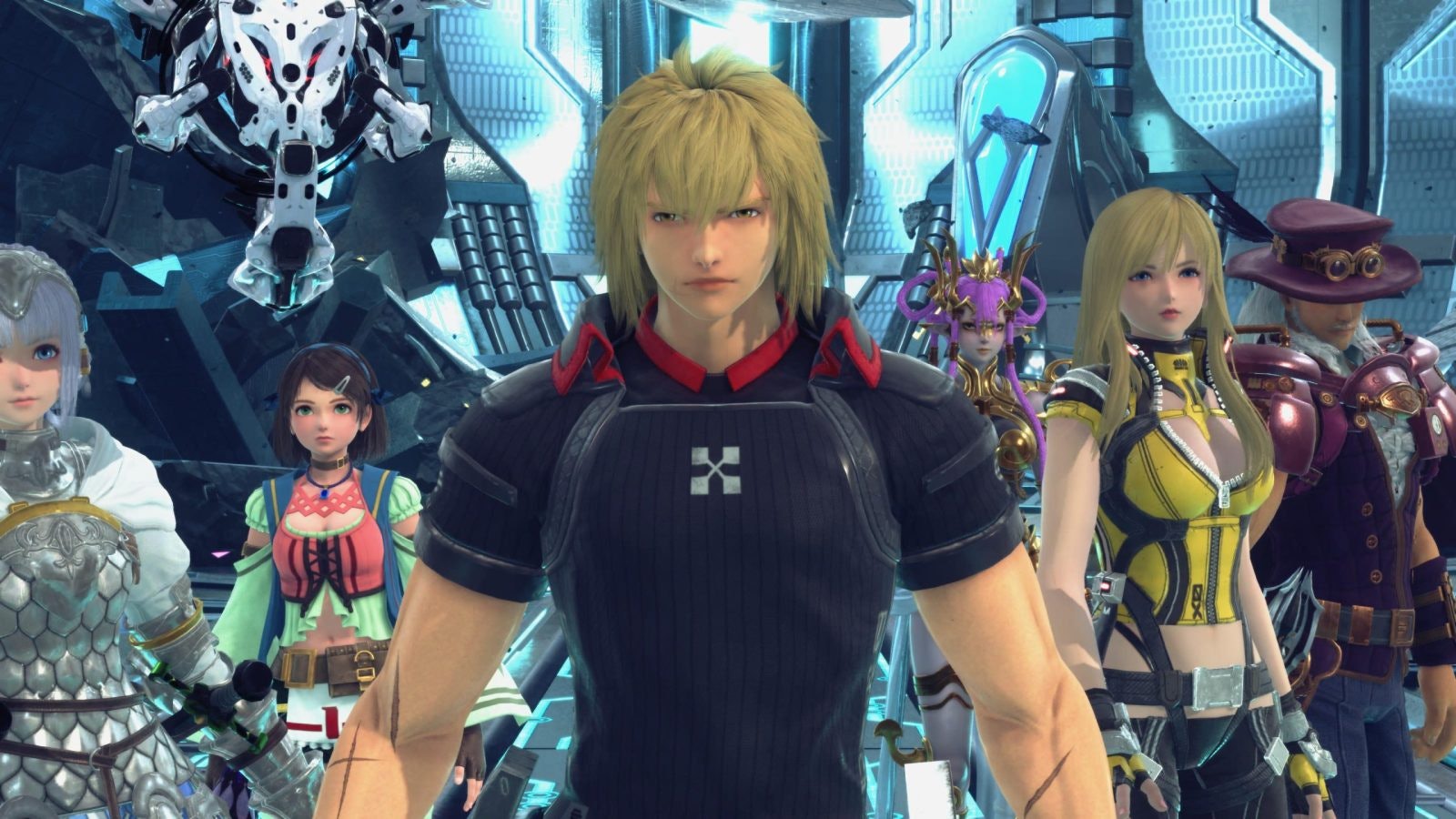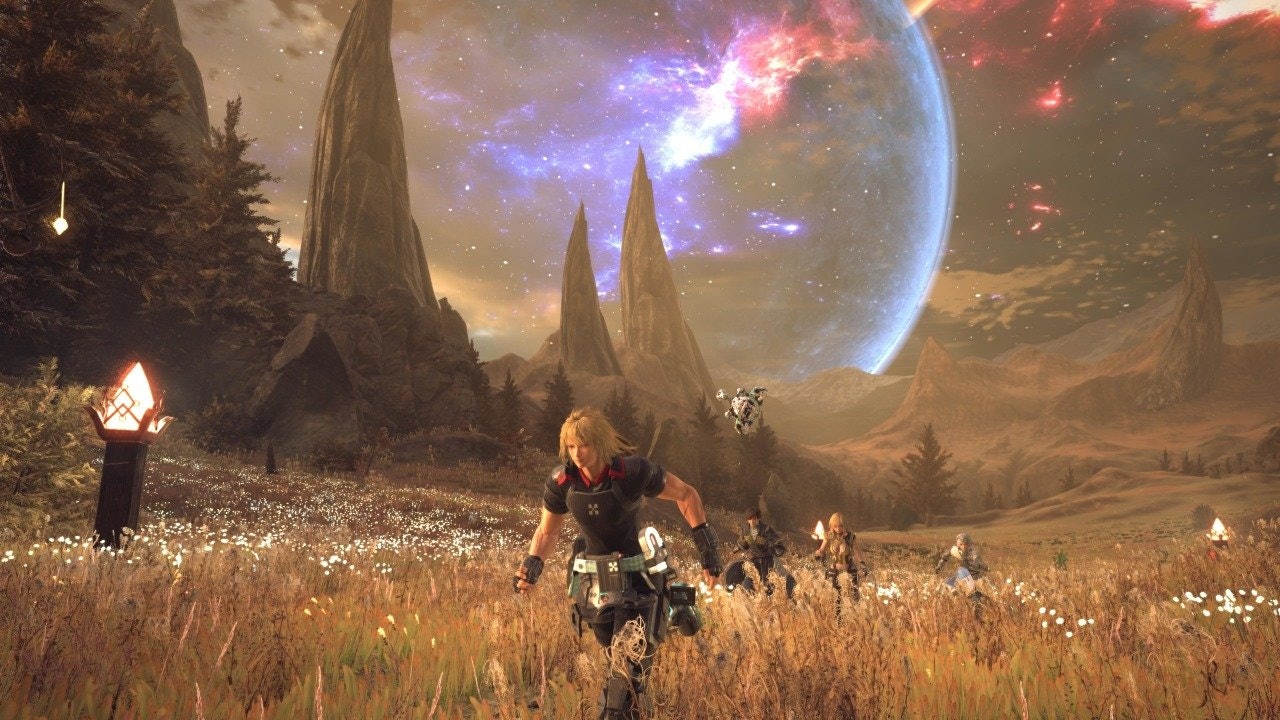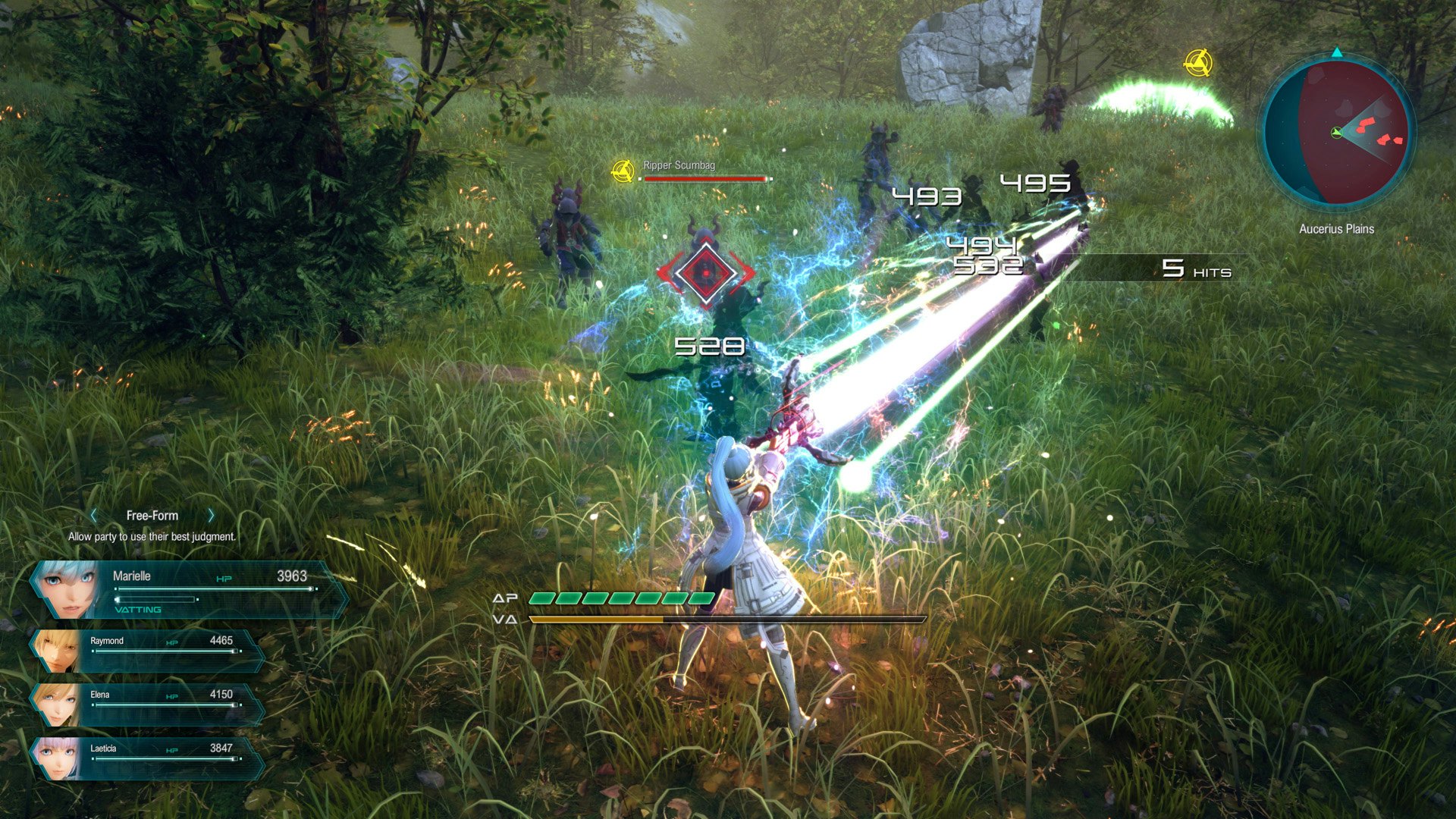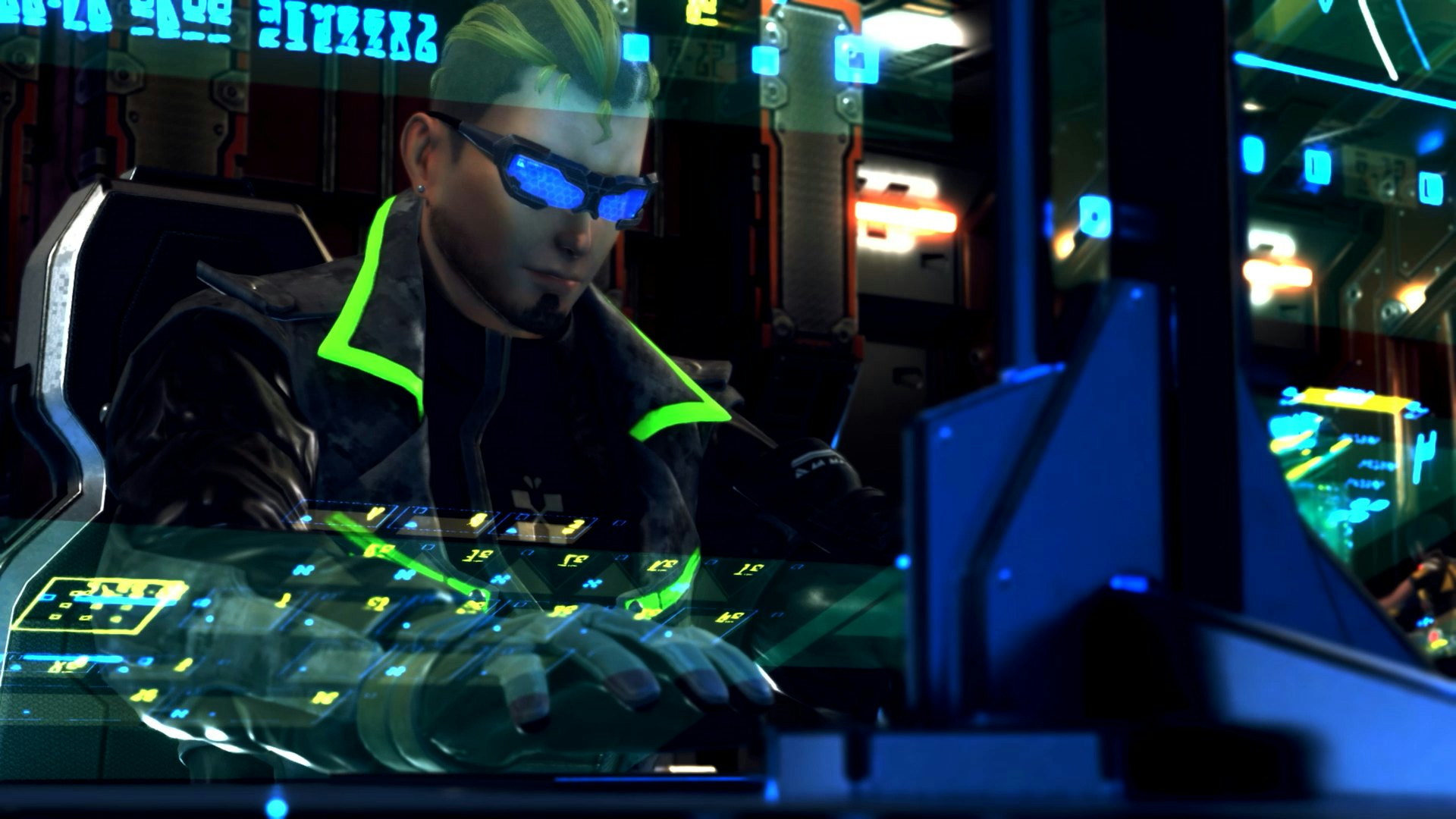
A mullet-rocking hero, a cyborg samurai, a dual-wielding princess, and a girl who heals by ringing a bell are here to save the world.
Star Ocean: The Divine Force is a quintessential JRPG, filled with all the tropes you might expect. This is comfort-food gaming, backed up by a charming cast of characters, vibrant exploration mechanics, and an utterly phenomenal combat system.
Developer Tri-Ace clearly aimed to right the ship after the underwhelming previous entry, and The Divine Force mostly succeeds in doing so by cherry-picking the best features and elements from across the series to create the definitive Star Ocean experience. Some of the problems that have long plagued the franchise are still there, but it’s a strong return to form and one of the most unique RPGs of the year.
A Tale of Two Heroes

The Divine Force uses a dual protagonist system, requiring you to choose one hero to follow when you start the game. While the overall narrative doesn’t differ dramatically between the two, some events and locations cary, and the overall vibe of the story will be much more slanted toward a sci-fi or fantasy depending on which you pick. Raymond Lawrence is the captain of a merchant starship called the Ydas, who crashlands on the planet Aster IV after his ship is attacked. Our other protagonist is Laeticia Aucerias, the princess of one of the biggest kingdoms on Aster IV, who runs into Ray after his escape pod falls from the sky. (You can probably guess where the characters fall on the sci-fi vs. fantasy spectrum.)
The Divine Force gives both heroes equal stake in the story, and they’re a breath of fresh air from the usual spiky-haired anime heroes of past Star Ocean games. Raymond may look like a meathead at first, but he’s a surprisingly savvy starship captain that’s become wise beyond his years. Meanwhile, Laeticia is a sincere but naive leader that wants to do right by her people but doesn't always know the best way to go about it.

Story-wise, The Divine Force is a slow burn. It feels exceedingly tropey in its early sections, though later on it starts to open up and feel more compelling. The heart of the story is the eclectic cast of characters: Midas Felgreed is a brilliant but crotchety inventor, Elena is a stoic android with a surprisingly human layer underneath, and Albaird is a stoic attendant to the princess that hides a goofy personality. An authentic, memorable camaraderie develops between the party, partly through one of the series’ staple mechanics, Private Actions.
Private Actions are optional scenes activated by talking to your party members in towns or settlements. These scenes generally show cute or lighthearted moments, like Albaird trying to hide his sweet tooth, or Midas asking Raymond about his most attractive feature.
The Private Action system adds fantastic depth to these characters, but unfortunately, it takes a lot of experimentation and guesswork to find many of these scenes. Earlier Star Ocean games show a notification when Private Actions are available, but The Divine Force strangely ditches that feature. To get the most out of the story, you’ll spend a lot of time running around trying to find Private Actions, and it’s a pity the system isn’t more streamlined.
Universal Mechanics

Star Ocean has always been a mechanics-heavy series, and thankfully other mechanics in The Divine Force fare much better than Private Actions. A robotic companion known as DUMA is the standout new addition, and it influences both combat and exploration in fascinating ways. DUMA lets your character fly through the air for short distances, providing some truly unique traversal opportunities both in and out of combat.
The Divine Force’s world is designed with verticality in mind, and there’s far more to explore here than any previous Star Ocean game. Environments are packed to the brim with treasures to discover and special enemies to challenge.
Each and every town in The Divine Force feels distinct and different. You can’t directly talk to most NPCs, but as you wander around you quickly realize there are loads of little conversations you can overhear by simply standing near groups. The world and environments look fantastic, and even though The Divine Force isn’t the most graphically impressive game, some stellar art design works wonders here. As in past Star Ocean games, character animations and lip-syncing occasionally awkward or off-time.
In terms of side content, a fun little strategic minigame called Es’Owa runs through the entire game, letting you challenge NPCs in a board game that uses pieces based on characters from the series' past. Intriguingly, the Es’Owa pieces also function as your primary stat-boosting accessories, providing an extra incentive to play.

Combat is where The Divine Force really shines, with an action-heavy system that rivals the intensity of Star Ocean: The Last Hope’s combat. Each attack or attack combo will use a set amount of your AP gauge. You can raise that gauge by performing Blindsides with DUMA, which entails swooping around to an enemy’s backside during combat, or special dodges. The more you take advantage of the enemy, the more AP you have for attacks. It adds a liveliness and deeper sense of engagement to otherwise ordinary encounters.
The combat mechanics provide a ton of freedom to customize your party, as each character has different Chain Combos, passive skills, DUMA’s abilities, and more. Every party member in The Divine Force feels distinct, from the heavy melee focus of Raymond to the more defensive healing mechanics of Nina. Each party member also gets a different DUMA ability, on top of a special attack called “Vatting” that you unlock later on. At least in terms of combat, it’s tough to imagine any two playthroughs feeling exactly alike.
Part of what makes the whole system so compelling is the fantastic progression system, which lets you specialize each character to a rare extent. Leveling up earns SP to use on your skill grid, which is somewhat like the License Board of Final Fantasy XII. You can unlock nodes in practically any order you want, meaning you can give a character a huge surge in attack, or simply unlock all of their moves first. SP can strengthen skills of every kind, from passive abilities to combat moves.
Item creation introduces even more variety to the mix. This system, a carryover from earlier Star Ocean games, lets you use your party members to combine resources and create weapons, medicine, accessories, and more. It requires a ton of experimentation to figure out what you can create, but it’s also totally optional. You can get by just fine only purchasing items from shops, but there’s a lot of depth to dig into with item creation, if you want it.
Return to Form

Star Ocean: The Divine Force is labeled as a 25th-anniversary project for the series, and that shines through in its liberal adoption of best ideas from across the franchise. The Divine Force riffs on the dual protagonists from Star Ocean 2, the fantasy-inspired wår story from Star Ocean 3, and an action-heavy combat system from Star Ocean 4. It feels like Tri-Ace really distilled what makes the series special, and for the most part, it works.
There’s still a layer of jankiness the series can’t escape in terms of visuals and tropey writing. But the compelling characters and gameplay mechanics overshadow the rough edges. If this is the last Star Ocean game, Tri-Ace has gone out with a bang.
8/10
Star Ocean: The Divine Force is currently available for PS4, PS5, Xbox One, Xbox Series X|S, and PC. Inverse reviewed the game on PS5.
INVERSE VIDEO GAME REVIEW ETHOS: Every Inverse video game review answers two questions: Is this game worth your time? Are you getting what you pay for? We have no tolerance for endless fetch quests, clunky mechanics, or bugs that dilute the experience. We care deeply about a game’s design, world-building, character arcs, and storytelling come together. Inverse will never punch down, but we aren’t afraid to punch up. We love magic and science-fiction in equal measure, and as much as we love experiencing rich stories and worlds through games, we won’t ignore the real-world context in which those games are made.







